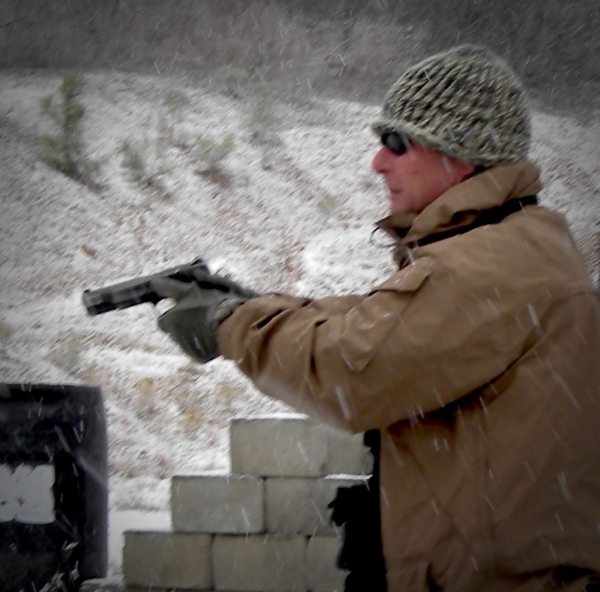A friend was out in Vegas training with Clint Smith last week, and it was cold. H.G. lives up north where it gets really cold with lots of snow. “I did something I’ve never done before,” he confided. I was curious what was new; H.G. has done a lot of training. “I shot while wearing gloves.” At the time, I didn’t really pay attention. Later, it got me to thinking, “How many of those who carry concealed, and train and practice actually do it under adverse – real life - conditions?”

“Cold” depends on where you live. Even here in the South – like right now – it gets into the twenties, with strong winds and sometimes sleet and snow. For us, that’s cold; I’m wearing a sweater or sweatshirt with a jacket over that. Lately I’ve been wearing gloves more – the truck isn’t worth what it costs to fix the heater. At best, the rain is cold. If you’re out in it for long you’ll need a waterproof, hooded jacket. Winter -- and the appropriate clothing -- complicate defensive carry.
Generally, the more layers of clothing you’re wearing the longer it takes to draw or present the pistol. Clearing two garments is more than twice as difficult as when wearing only one layer. Clothing limits movement. Additional layers restrict your physical actions, and the speed you can perform.
Hoods greatly reduce your field of view. peripheral vision is more than we realize; it’s our early warning system. You “notice” sudden movement off to the side. In order to scan, visually inspecting your surroundings, you have to turn the body. The same is true for your hearing. What you hear is reduced, as well as the ability to determine direction. Triple this if there’s hard rain pelting the hood or strong winds.
Gloves add another layer of complexity. The heavier the material – and warmer - the more cumbersome your actions will be. Losing the sense of touch, the ability to feel, changes everything. Suddenly, it’s like you’re trying to clear cover garments, acquire a proper grip on the pistol, manipulate the safety and operate the trigger smoothly with stumpy tree limbs for fingers. And, we haven’t even gotten to single hand operation of the pistol while wearing extra clothing and gloves.
Thick clothing and layers do have a couple of advantages. As a police officer my grandfather always carried a snub revolver in the pocket of his weighty wool coat. (This was before cars had heaters). He continued the habit as a civilian. Plus, for sudden, close quarters violence the wheel gun can be fired from inside the pocket. Hefty clothing has also been known to redirect and sometimes completely stop incoming handgun rounds.
We train and practice so that when the time comes our response to a violent attack will be efficient. This may include using your handgun to stop the threat. Training and practice should reflect the realities of how you live, including weather appropriate clothing. If you only shoot when it’s “nice” then you’re sort of like the person who buys a pistol, fires it a few times and shoves it in the sock drawer. Both are kidding themselves about being ready. You’ve got to get your “walk” correct.
Tiger McKee is director of Shootrite Firearms Academy. He is the author of The Book of Two Guns, AR-15 Skills and Drills, has a regular column in American Handgunner and makes some cool knives and custom revolvers. Visit Shootrite’s Facebook page for other details.